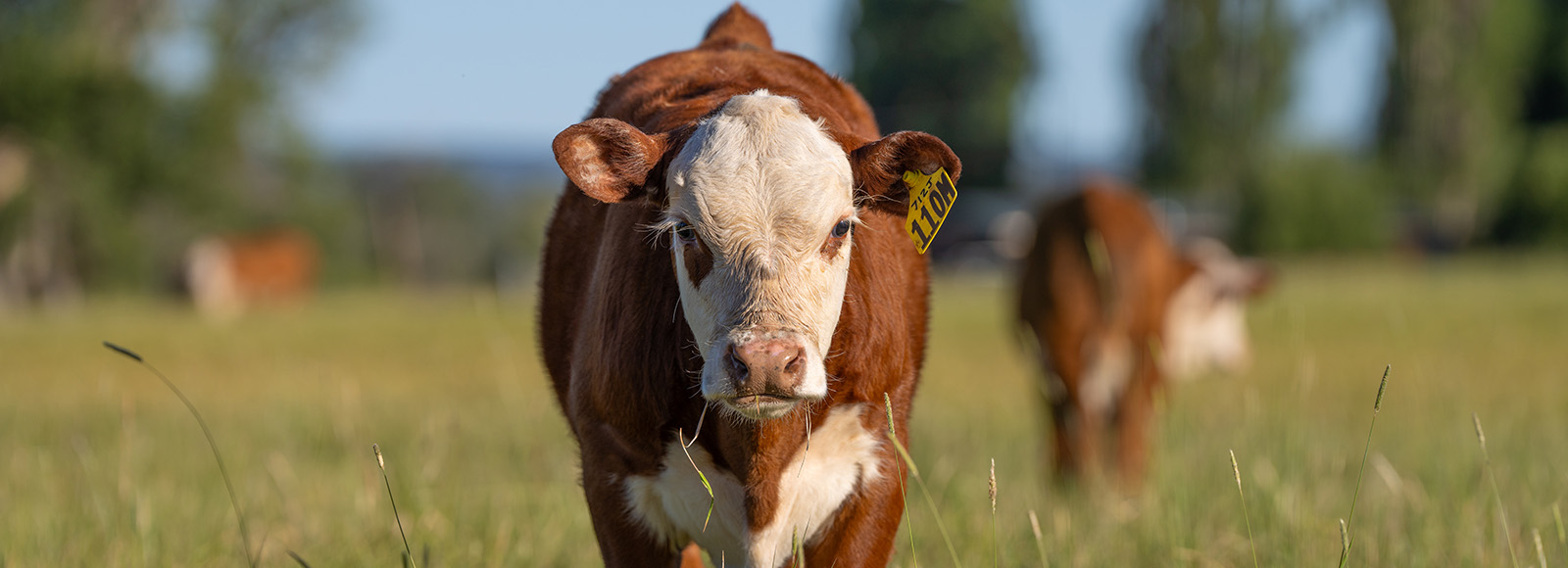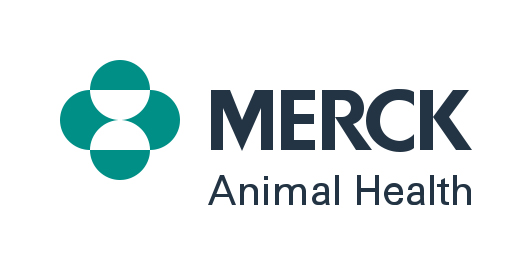
Frequently Asked Questions:
Calf Vaccination






Getting calves off to a healthy start
Learn from these commonly asked questions as you make plans to vaccinate calves and prepare them for the next stage.
Common Vaccines
We recommend consulting your local veterinarian on vaccine selection. They will know about the specific disease pressures in your area and can help build a program based on your operation’s goals.
There are intranasal and injectable vaccines for calves. Core calfhood vaccinations include 5-way respiratory and 7-way clostridial vaccines. Combinations with additional coverage or vaccines for certain pathogens may be warranted.
Follow label instructions, including giving booster doses as needed.
Calves are born with a developing but not fully functional immune system. Calves can be vaccinated as young as 1 week of age with BOVILIS® NASALGEN® 3 PMH, an intranasal vaccine that is effective against both viral and bacterial pneumonia-causing pathogens.
As calves get closer to weaning age, incorporate a preconditioning program. This includes respiratory and clostridial vaccinations and management practices to help protect calves against BRD.
Follow label instructions, including giving booster doses as needed.
Blackleg is an acute, highly fatal disease caused by an anaerobic, soilborne bacterium called Clostridium chauvoei. Fortunately, there are vaccines (usually 7- or 8-way vaccines) that are highly effective against this deadly disease.
Merck Animal Health offers more than six BOVILIS® VISION® vaccines, including combinations that are effective against pinkeye and H. somni. BOVILIS VISION is one of the most studied vaccines on performance in the market when it comes to clostridial vaccines.
Infectious bovine keratoconjunctivitis (IBK) — or pinkeye — is a common, costly and frustrating problem. It occurs because of interactions between cattle, pathogens, and environmental and management stressors. There is not a single solution when it comes to preventing pinkeye, and a combination approach provides the best opportunity to prevent the disease. This can involve fly control, environmental management and pinkeye vaccination.
Merck Animal Health held a roundtable of experts to get perspectives on pinkeye and insights on how to reduce its impact.
Vaccination Tips
Steps to take to help keep animals healthy include:
- Clean, fresh water and adequate nutrition
- Clean, dry pens with access to weather appropriate structures
- A comprehensive vaccination protocol
- Regular deworming
- Good biosecurity practices to limit the introduction or spread of disease
- Low-stress cattle handling
- Veterinary oversight of herd health practices
To be effective, vaccines must be administered to animals that are healthy and, in a condition to respond to the vaccination.
To help select vaccines and get the best results, cattle producers should:
- Work with their veterinarian to build a vaccination program.
- Handle and store vaccines properly.
- Take steps to reduce stress and minimize time in the processing facility.
Keep in mind that parasites can impact cattle immunity and their response to vaccines. Don’t forget about parasite treatment, ideally one to two weeks prior to vaccination.
Handling & Storage
Follow the proper steps for storing and handling vaccines.
For modified live virus (MLV) vaccines, store and handle both the vaccine cake and sterile diluent according to label directions. Mixing the cake with warm diluent can greatly shorten or eliminate the effectiveness of the vaccine. Freezing is harmful as well and can damage both MLV and killed vaccines.
For best results, store vaccines in a well-functioning refrigerator and avoid storing products in the door where temperatures can fluctuate. MLV vaccines should be used within two hours of mixing.
When reconstituting an MLV vaccine, use a swirling or rolling motion vs. shaking, which can damage the MLV within the vaccines. Once mixed, an MLV vaccine should be kept at the proper temperature and out of direct sunlight.
Always use a clean needle when filling a syringe from the bottle. Don’t reload a syringe from a bottle using a needle previously used to administer a vaccine to an animal.
Sanitize syringes after use, using only hot water for MLV vaccine syringes. Soaps and disinfectants can be used for killed vaccine syringes, but rinse thoroughly.
Watch to learn tips on mixing and handling modified-live vaccines.
Using intranasal vaccines
Intranasal vaccination is a good option to help protect young calves against BRD-causing pathogens. This method of vaccination delivers antibodies directly to the mucosal surfaces in the nose.
Intranasal vaccination stimulates an immune response in the mucosal immune system. This will begin to put protective immunity in place within three to four days after vaccination.1 Intranasal vaccines also stimulate nonspecific immunity at the mucosal surfaces, which help provide protection against pathogens not found in the vaccine.2
BOVILIS® NASALGEN® 3-PMH is an intranasal, modified-live vaccine that is effective against both viral and bacterial pneumonia, including against five of the major causes of BRD. It can be given to nursing calves as young as 1 week of age.
Intranasal vaccine administration is fairly simple. To restrain the calf’s head securely, wrap one arm around the neck and grasp the head firmly under the jaw. Tilt the head upward to about 45 degrees to effectively distribute the vaccine to nasal passages.
Younger calves are typically easier to restrain and less resistant to having their head tilted into the proper position. Once calves are positioned and ready, gently insert the applicator with the cannula into the nostril.
If using a longer cannula, only insert the tip about half an inch to reach the nasal mucosa without damaging the nasal lining. Depress the plunger to spray the vaccine — either one dose (2 mL) in one nostril or a half dose (1 mL) in each (check product label).
Using an ALLFLEX CleanVaxTM atomizer nozzle can reduce product drip and help ensure more even distribution of the vaccine inside the nostril. When reloading syringes, always use clean and preferably new needles.
Using ALLFLEX CleanVaxTM disposable shields enhances hygiene and mitigates the risk of cross-contamination between calves.
Disinfect syringes and cannulas after use with boiling water. Do not sterilize syringes with chemical disinfectants and detergents since they can kill the modified live components.
Preconditioning
A preconditioning program helps boost the immune system and prepare calves for the next stage. It consists of respiratory, clostridial and optional pinkeye vaccinations, management practices such as deworming and weaning, plus transitioning calves to dry feed. Learn about how to precondition and download a certificate to demonstrate your preconditioning efforts.
Merck Animal Health, Superior Livestock Auction and Kansas State University work together to evaluate the management decisions, programs, and health protocols that drive the price per pound paid by buyers.
The 2023 dataset includes information from 898,500 calves.3 The data showed VAC45 calves — those vaccinated with two doses of a clostridial vaccine, two doses of a 5-way modified live viral vaccine, and at least one dose of M. haemolytica and/or P. vaccine, and weaned at home for 45 days before delivery — added $7.86/cwt compared to those receiving only one dose of each of the three vaccines and weaned at shipping. Not to mention, calves weighed more at the end of a 45-day preconditioning program than those weaned at sale time.
Selling calves on a VAC45 program added nearly $45/head.4
BOVILIS® PrimeVAC™ by Merck Animal Health is an example of a value-added program that focuses on respiratory and clostridial vaccinations, as well as treatment of internal parasites. It gives a clear guide of the steps needed to help boost the calf’s immune system and health status at this stage.
Document your calves’ preconditioning steps using a sale barn card or certificate like this.
This form of documentation can be signed by your veterinarian and shared with the buyer.
Cattle Producers:
Merck Animal Health is Here to Help
Always work with your local veterinarian who knows your goals and health challenges in your area.

Explore the complete line of Vaccines from Merck Animal Health

References
1. Kesl, L., Saltsman, R., Burdett, B., Nordstrom, S., Xue, W. Determination of the Number of Days from Vaccination to Challenge Required for Protection from Infectious Bovine Rhinotracheitis (IBR) Virus Challenge Following Vaccination with Onset 5 IN and Vista 5 SQ in 13–30 Day Old Colostrum Deprived Calves. Publication pending in World Buiatrics 2022.
2. Midla, L., Griebel, P., Edmonds, M., Van Engen N., Townsend, H., Renter, D., Streeter, M., Hutcheson, J. Nasalgen vs. Inforce: Immune Response to Vaccination in Neonatal Colostrum Fed Holstein Calves. Publication pending in JAVMA 2021.
3. Superior Livestock Auction Data 2023.
4. Glynn T. Tonser. Dept. of Agricultural Economics. Kansas State University. Evaluation of 2023 Superior Livestock Auction data.
